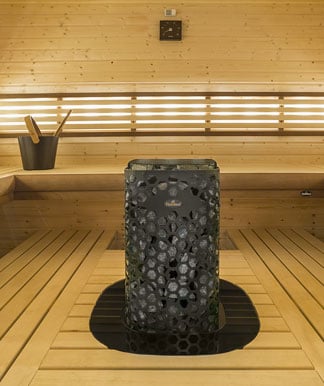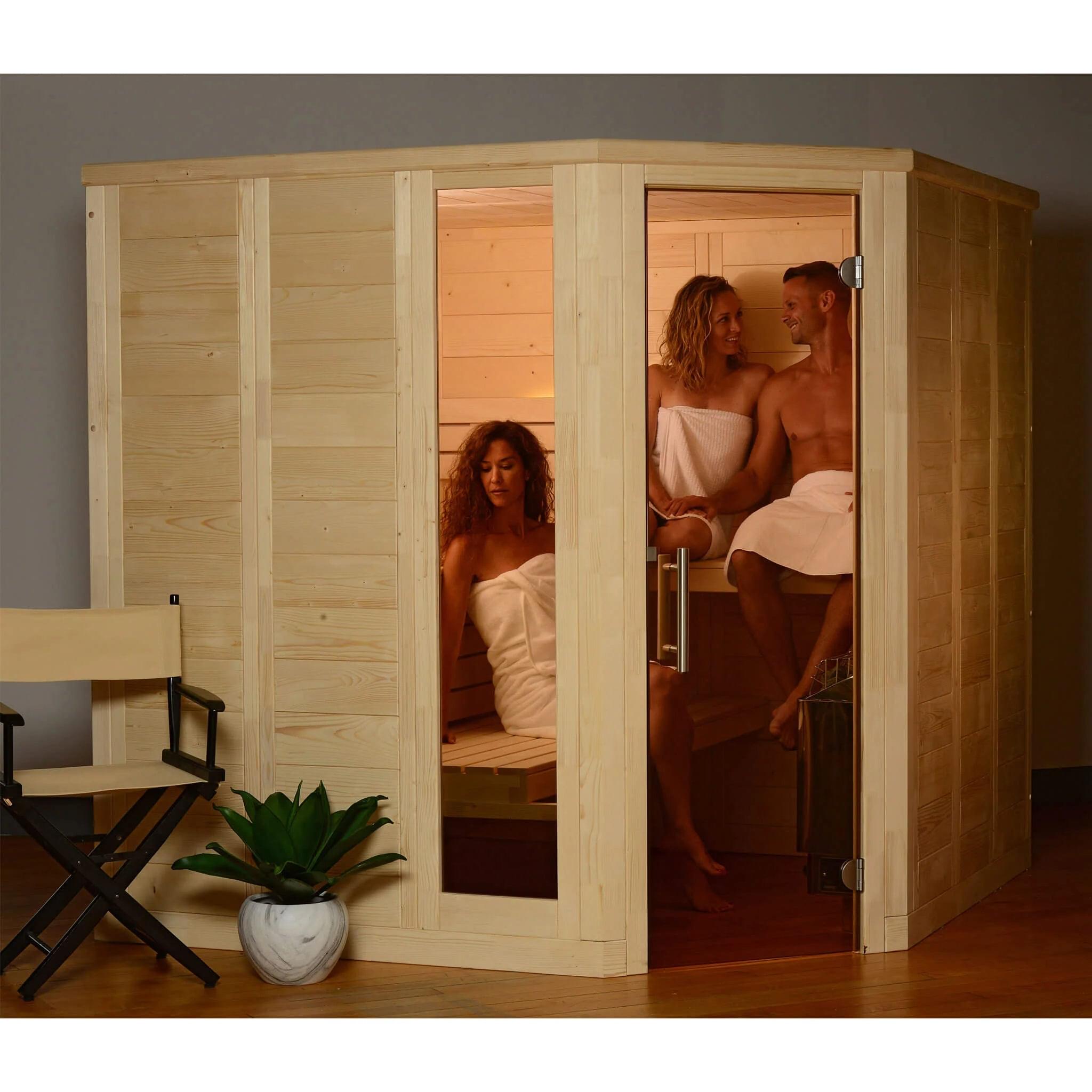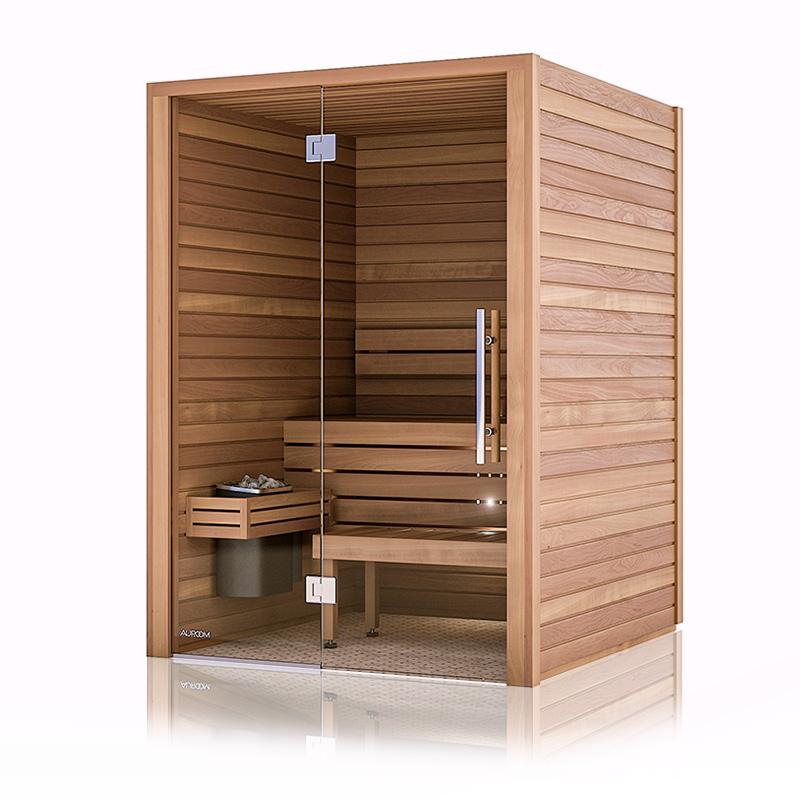All about Traditional Sauna
Table of ContentsThe Ultimate Guide To Traditional SaunaThe Main Principles Of Traditional Sauna 6 Easy Facts About Traditional Sauna ShownThe 15-Second Trick For Traditional SaunaThe 7-Minute Rule for Traditional Sauna
Power cost savings is one thing to consider for individuals that intend on utilizing their sauna often. For a traditional sauna, bathers usually require to await 30-40 mins for the area to pre-heat before getting in. Infrared saunas, on the various other hand, commonly reach their perfect temperature in about 15 mins.That indicates that in an infrared sauna, bathers can start appreciating their sauna promptly. One distinction in between the 2 types of sauna that is often forgotten is the social experience.
Think about exactly how many people will certainly be making use of the sauna prior to making your decision - Traditional Sauna. Including a sauna to your home can be one of the most interesting and rewarding decisions you'll ever before make. Regular sauna use will certainly improve your circulation, preserve much healthier skin, assistance kidney function, minimize high blood pressure, improve brain feature, and a lot more
Top Guidelines Of Traditional Sauna

Infrared and standard dry saunas are both prominent alternatives for those seeking leisure and therapeutic benefits. However, there are some vital differences between both types of saunas that need to be taken into consideration before deciding. Standard dry saunas use heated rocks to produce heavy steam, while infrared saunas make use of infrared heaters to directly warm the body.
Variables such as warmth tolerance, preferred degree of detoxification, and general health and wellness ought to be considered when choosing which kind of sauna to utilize. Infrared saunas are a sort of sauna that use infrared light to heat up the body directly, as opposed to heating up the air around the body like typical saunas.
The temperature level in an infrared sauna is generally reduced than in a traditional sauna, with temperatures varying from 120F to 150F. Traditional Sauna. Infrared saunas supply an array of advantages that make them an attractive option for those looking to enhance their health and wellness. Some of the benefits of infrared saunas include: Infrared saunas utilize lower temperature levels than conventional saunas, which can make them extra comfy for those who find high temperature levels difficult to endure
The Basic Principles Of Traditional Sauna
This can help to promote leisure, reduce muscle tension, and ease discomfort. Some professionals suggest that infrared saunas may offer benefits for calming an aching throat. Infrared saunas have actually been revealed to assist the body get rid of toxins through sweating. Sweating can likewise assist to boost skin wellness by eliminating impurities and dead skin cells.
The warm created by infrared saunas can assist to boost blood circulation and boost flow. Infrared saunas have been revealed to assist decrease stress and anxiety and advertise leisure.

Traditional Sauna - Questions

There are numerous benefits to making use of a standard completely dry sauna. Below are a couple of: Leisure: The heat and low moisture in traditional dry saunas can aid unwind the muscular tissues and reduce stress and anxiety levels. Cleansing: Sweating in a sauna can assist get rid of contaminants from the body, which can boost overall health.
When it involves saunas, there are 2 main types of heating techniques: conventional and infrared. Traditional saunas make use of heated air to heat the body, while infrared saunas use infrared radiation to penetrate the skin and warm the body from within. One of the main distinctions in between the two methods is the sort of heat they Our site produce.
Traditional saunas warm the air, which then warms the body with convection. Infrared saunas, on the various other hand, warm the look at this web-site body directly through radiation.
In terms of energy effectiveness, infrared saunas are normally extra effective than standard saunas due to the fact that they need less power to run. They additionally warm up quicker, so they can be used for shorter sessions. When it concerns the results on the body, both sorts of saunas have been shown to have benefits.
Fascination About Traditional Sauna
Infrared saunas have been shown to have similar benefits, along with possibly aiding with detoxing, skin health and wellness, and immune feature. In general, the selection in between a traditional or infrared sauna boils down to personal choice and specific requirements. Standard saunas may be much better for those that prefer higher temperature levels and an extra intense sweat action, while infrared saunas might be better for those that desire a more gentle and reliable heat treatment.
Both kinds of saunas offer one-of-a-kind advantages and disadvantages that must be thought about before deciding. The selection between an infrared sauna and a conventional dry sauna mainly relies on personal choice and the preferred benefits - Traditional Sauna. Those that choose an even more comfy, lower temperature environment may choose an infrared sauna, while those that are trying to find intense warm and a typical sauna experience may prefer a conventional dry sauna
Here are some safety and security pointers to keep in you can find out more mind when utilizing infrared and standard dry saunas:: Saunas can trigger too much sweating, resulting in dehydration. It is essential to drink a lot of water in the past, throughout, and after sauna sessions to stay hydrated.: It is recommended to restrict sauna sessions to 20-30 mins to prevent overheating and dehydration.